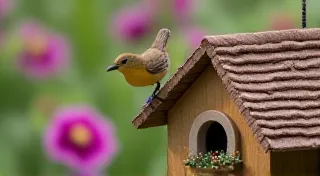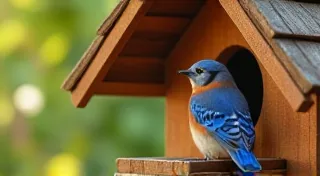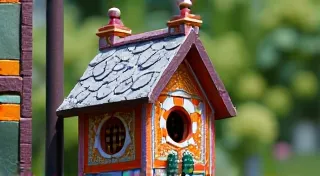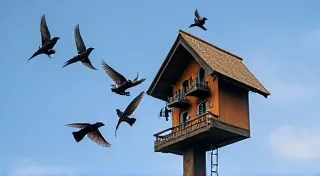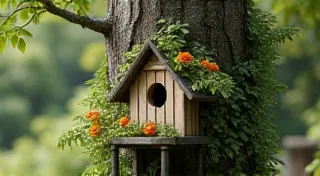Building a Bird House with a Predator Guard
Protecting your feathered friends is a crucial part of building bird houses. While providing a cozy home is wonderful, it’s also important to shield them from predators. Cats, raccoons, squirrels, and even larger birds can pose a significant threat to nesting birds and their eggs. This article details how to incorporate a predator guard into your bird house design, giving your birds a safer environment.
Understanding the Threat
Predators are a natural part of the ecosystem, but in close proximity to human homes, the risks can be amplified. Here's a look at common bird house predators:
- Cats: A significant threat, cats can easily scale poles or jump onto platforms.
- Raccoons: Ingenious and persistent, raccoons have nimble paws capable of manipulating latches and climbing.
- Squirrels: While squirrels don't typically eat the eggs or chicks, they can harass the birds and raid the nest for nesting material.
- Larger Birds: Birds like crows or jays may harass smaller nesting birds.
Types of Predator Guards
There are several effective predator guard designs. The best choice depends on your specific needs and the types of predators common in your area. Here are a few options:
- Baffles: These are cone- or cylinder-shaped barriers that prevent predators from climbing the mounting pole. They can be purchased ready-made or built yourself.
- Extended Roofs/Overhangs: A wider roof overhang makes it difficult for predators to reach the entrance hole.
- Entrance Hole Size Restriction: Limiting the size of the entrance hole to match the intended bird species can discourage larger birds and animals from entering.
- No Perch: Predators can use perches to gain access. Birds do not need a perch.
- Extended Pole: A long pole can make it hard for cats or raccoons to reach the bird house.
Designing & Building a Bird House with a Predator Guard - Step-by-Step
Let’s focus on incorporating a baffle and an extended roof as examples. This assumes you already have a bird house plan. The principles can be adapted to other designs. For truly unique and beautiful designs, consider exploring a decorative birdhouse project – it’s a great way to add personality to your yard.
- Plan for a Tall Mounting Pole: A pole at least 4-6 feet high is a good starting point. Longer is better.
- Choose a Baffle: Select a metal or sturdy plastic baffle designed for bird house poles.
- Extend the Roof: Increase the overhang of the roof by at least 2-3 inches on all sides. This provides additional protection from predators attempting to reach the entrance.
- Secure the Mounting: Ensure the pole is securely mounted to a sturdy base to prevent it from being knocked down.
- Install the Baffle: Place the baffle below the bird house, ensuring it is positioned so predators cannot reach over or around it.
Materials Needed (Example - with baffle and roof extension):
- Wood (cedar or redwood recommended for weather resistance)
- Screws/nails
- Metal baffle (or materials to build one)
- Measuring tape
- Saw
- Drill
Choosing the Right Wood for Your Bird House
The longevity of your bird house is directly related to the quality of the materials you use. Selecting the right wood is critical. Cedar and redwood are excellent choices due to their natural resistance to rot and insects. However, sourcing these woods can sometimes be challenging or expensive. Before you begin, it's a good idea to consider all the factors involved in wood selection – understanding the ideal placement and care for your birdhouse is just as vital as building it well. For more detailed guidance, check out Bird House Ventilation and Drainage: Keeping Nests Healthy to ensure your choice contributes to a comfortable and healthy environment for your feathered tenants.
Important Considerations
- Material Choice: Use durable, weather-resistant materials.
- Regular Inspection: Periodically check the bird house and predator guard for damage and ensure they remain secure.
- Cleaning: Clean out the bird house annually after nesting season.
- Targeted Species: Consider which birds you're hoping to attract. Different species have different nesting preferences. For example, chickadees prefer smaller entrances and specific habitat types. If you are aiming to create a haven for bluebirds, be sure to review Building a Bluebird Nest Box: Design & Placement for Success to ensure optimal conditions for these charming birds.
Providing a safe and comfortable nesting environment for birds can be a rewarding experience. Beyond predator protection, it's important to consider the overall habitat suitability. Avoid using treated lumber, as the chemicals can be harmful to birds. Also, be mindful of the bird house's location. Choose a spot that offers some protection from the elements and is easily accessible for cleaning.
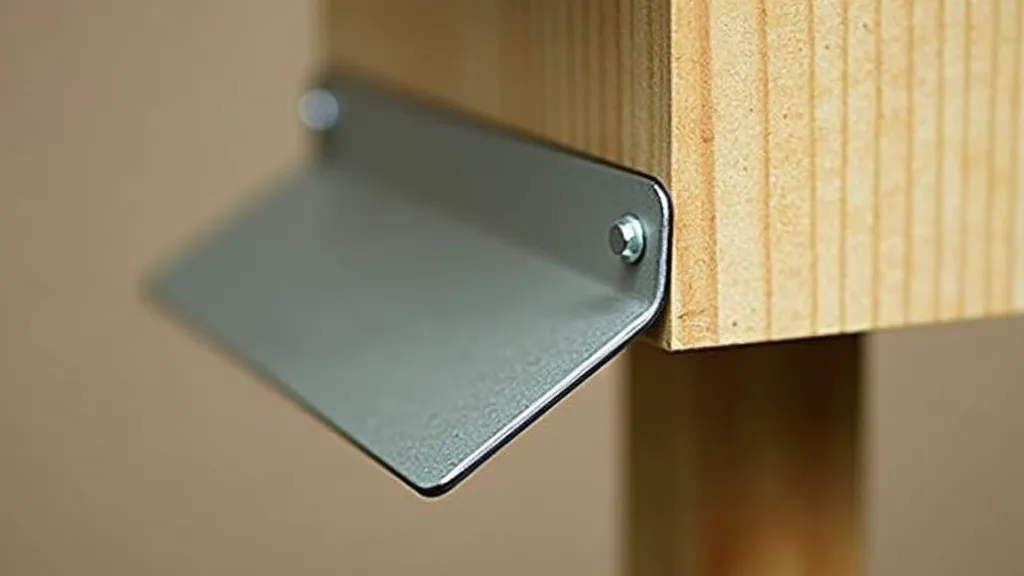
Safety Note: Always prioritize the safety of the birds and yourself. Work carefully when using tools and ensure the bird house and predator guard are properly installed.
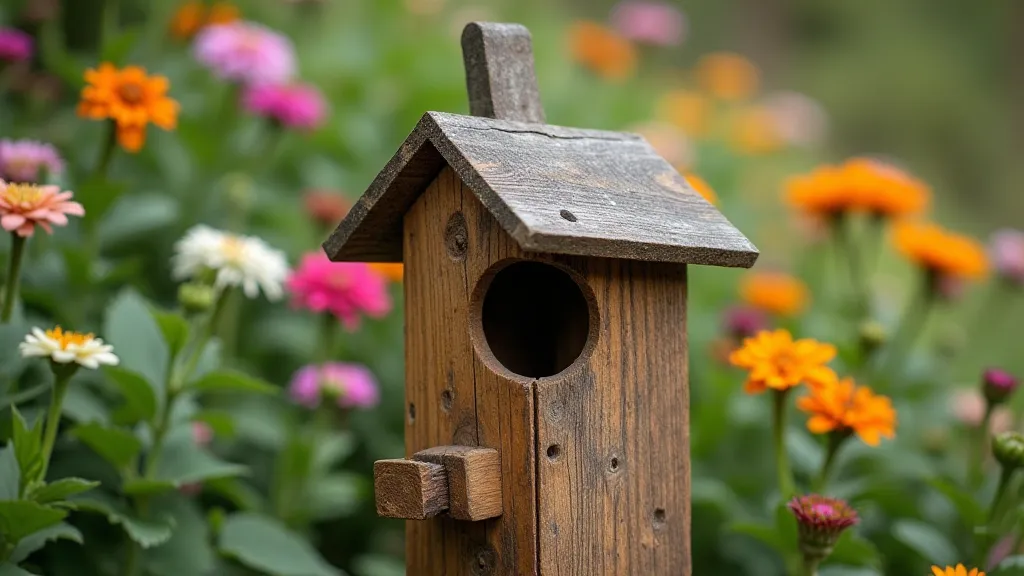
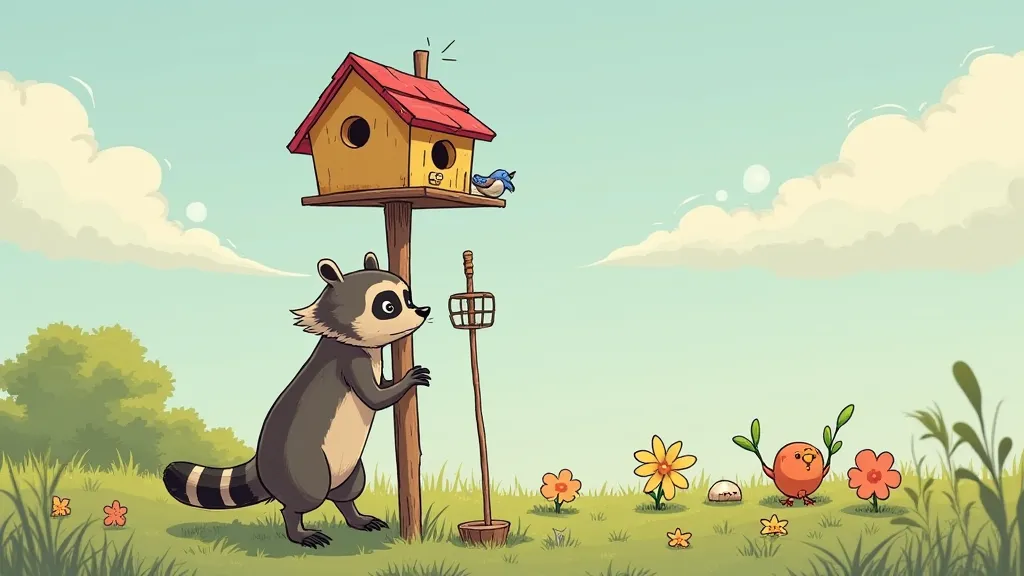
Troubleshooting Common Bird House Problems
Even with the best planning and construction, you might encounter some challenges. Squirrels are notoriously clever and might find ways around your defenses. Raccoons are persistent and may require more robust measures. Regularly inspect your birdhouse and adjust your predator guards as needed. A little extra effort can make a big difference in ensuring the safety of your feathered residents. Proper placement is vital - ensuring easy access for cleaning and observing your avian visitors is just as important as securing them from predators. Refer to Attracting Birds to Your Bird House: Placement and Care for detailed advice on creating an inviting and protected environment.
Beyond the Basics: Advanced Predator Control
For areas with particularly high predator pressure, consider implementing additional measures. Motion-activated lights can deter nocturnal predators, while strategically placed thorny bushes can create a natural barrier. Remember, the goal is to protect the birds without harming the predators – creating a balanced ecosystem is key. If you are specifically hoping to attract an Eastern Phoebe, a specially designed birdhouse is often beneficial - learn more about Eastern Phoebe Bird House: Simple and Functional Design to provide the ideal conditions for these delightful birds.
Ultimately, creating a thriving bird-friendly habitat is about more than just building a house; it's about fostering a welcoming ecosystem for a variety of species. Consider planting native trees and shrubs to provide food and shelter, and avoid using pesticides that can harm birds and their food sources. A little effort can make a big difference in creating a haven for birds in your backyard.

